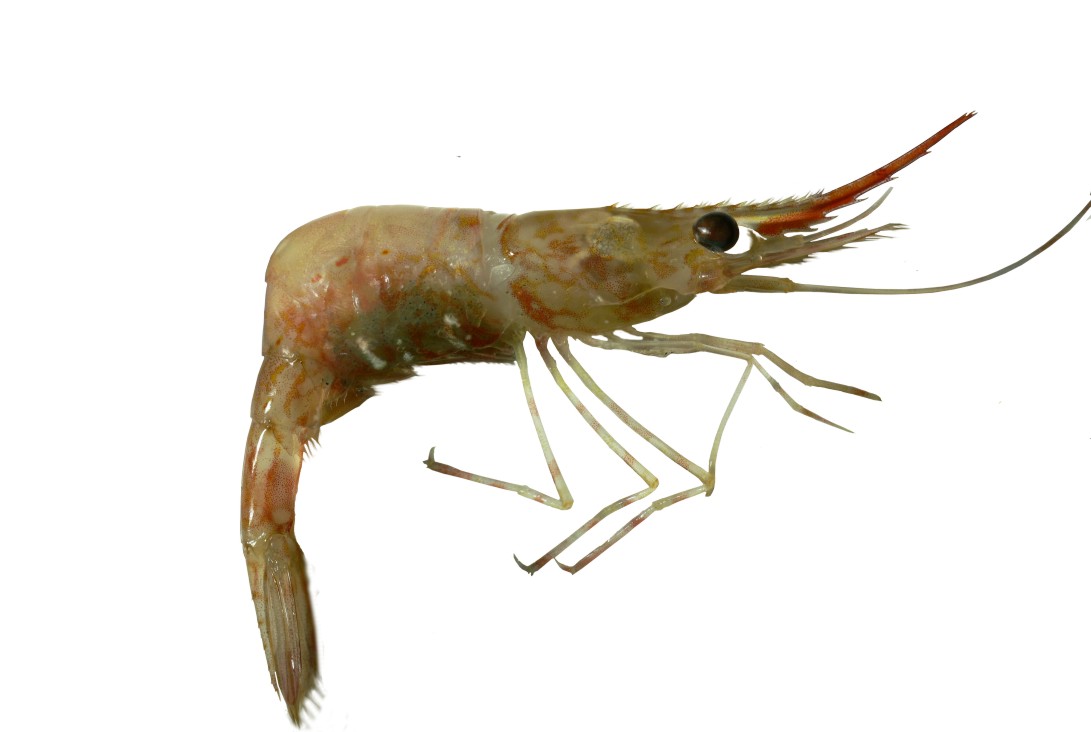How to Distinguish from Similar Species:P. platyceros has an abdominal segment less than twice as long as wide. P. eous, P. jordani, and P. goniurus don't have the steeply ascending rostrum with the three pointed (trifid) tip. They also have a medial dorsal ridge on abdominal segment 3. This is the only pandalid shrimp in this area which has light bands on its legs but no stripes or spots on the body.
Geographical Range: West side of Bering Sea and Sea of Okhotsk to Channel Islands off Santa Barbara, CA.
Depth Range: 5-1984 m
Habitat: Rocky and muddy bottoms, may be more common on rocky bottoms.
Biology/Natural History:
This species was early identified as P. montagui tridens,
a
Bering Sea variation of the Atlantic P. montagui.
However,
the larvae differ in several reliable anatomic respects from those of P.
montagui and the adults are colored differently, leading P.
tridens
to be given full species status. Except for the difference in
coloration
and the fact that the rostrum
of P. montagui ends in 2 points and that of P.
tridens ends
in 3, the adults of these two species are almost indistinguishable. P.
tridens tends to have more rostral
spines but the counts overlap. P. tridens
also has shorter
dactyls than does P. montagui.
The isopod Bopyroides hippolytes infests the gills of this species but does not infest P. montagui. It may also be parasitized by the Rhizocephalon barnacle Sylon hippolytes.
This species is a protandroushermaphrodite
(is a male first, then later becomes female). It appears to
change
from male to female at about 1 1/2 to 2 years old. In the
Strait
of Georgia females may be ovigerous
(carrying eggs) from late November to early April.
| Return to: | |||
| Main Page | Alphabetic Index | Systematic Index | Glossary |
References:
Dichotomous Keys:Kozloff, 1987, 1996
General References:
Butler,
1980
Jensen,
1995
Lamb
and Hanby, 2005
Scientific Articles:
Web sites:
General Notes and
Observations: Locations,
abundances, unusual behaviors:

This dorsal view is also by Andrey Gontchar. This individual,
which is the same as the one at the top of the page, is a mature
female.
It was collected at about 300 m depth in the Sea of Okhotsk, near
southwestern
Kamchatka.
Authors and Editors of Page:
Dave Cowles (2009): Created original page
CSS coding for page developed by Jonathan Cowles (2007)
Rosario Invertebrates web site provided courtesy of Walla Walla University
